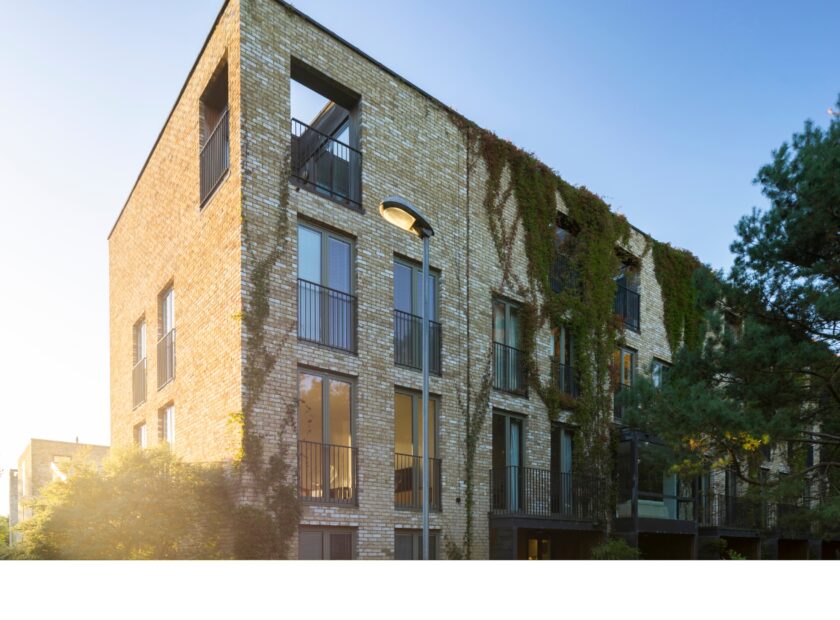Duncan Neish of the National Housing Federation explains why the organisation backs our ten Healthy Homes Act Principles.
Housing associations provide homes to six million people in England. Our sector is responsible for almost a quarter of new homes, split evenly between own building and Section 106 acquisitions – so we have a keen interest in the legislative framework for housebuilding.
Furthermore, our interest in homes and places doesn’t end with sales: most returns on our investment accrue over decades. While good for residents, well-planned, well-built homes are also good business sense.
Unfortunately, good intentions can conflict with commercial reality. Associations compete for land against private developers bidding on the basis of the highest sale/lowest build prices. Section 106 homes are of variable quality. There are examples of new homes and places created to high standards, but too often this is despite the regulatory environment, rather than because of it.
The Healthy Homes Act isn’t the whole answer to building a housing legacy to be proud of, but it does address many important issues. Here are ten reasons we support it.
1 Be safe in relation to the risk of fire
The tragic fire at Grenfell Tower exposed a building regulatory system that is not fit for purpose. Subsequent – fortunately non-fatal – incidents have shown this applies to newer buildings too. The Government must ensure residents’ safety by mandating and taking responsibility for a system that ensures a tragedy like Grenfell can never happen again.
2 Have adequate living space
A dysfunctional market leading to sky-high land prices and local monopolies, coupled with an under-resourced planning system, has delivered new homes with space standards that would have been anathema to previous generations.
Sadly, there is often little commercial or regulatory incentive to do better. Fewer than half of local authorities mandate Nationally Described Space Standards and almost no new homes outside London meet good standards for internal accessibility. It’s hard for housing associations to deliver high standards at low prices when private developments don’t have to.
3 Have access to natural light
Incredibly, in 2019, it’s possible to lawfully create homes without windows. How did we come to this?
4 Be accessible – and the environment that the homes are in should be accessible and safe places
Many new developments have little or no public transport, lack local amenities and are beyond walking distance of existing services. Their car-dependence encourages sedentary lifestyles, aggravates congestion and pollution and undermines traditional town centres.
Car dependence isn’t good for car owners – but it’s worse for those without, including the majority of social renters. 54% have no car or van (compared to 11% of owner-occupiers), often severely limiting access to employment and services.
5 Be within walkable neighbourhoods
A further downside of our car dependence and dysfunctional planning is that we design environments where walking and cycling are not attractive or viable options. Low densities, car-centric layouts and mono-use neighbourhoods do not encourage walking, let alone outdoor play or community interaction.
6 Secure radical reductions in carbon dioxide emissions in line with the provisions of the Climate Change Act 2008
Despite housing association homes being some of the most energy efficient, UK homes in general are thermally inefficient and a major source of emissions. What’s more, over 10 per cent of residents (almost 20 per cent in the growing private rented sector) suffer fuel poverty.
Committing to higher energy efficiency standards would therefore help with both emissions and poverty reduction. A serious national energy efficiency programme could deliver wider economic and employment benefits too. What’s needed is political will backed by regulation.
7 Have walkable access to green and play space that is open to everyone
The benefits of green space for both physical and mental health are clear. Yet provision of, or access to, such space has sometimes been seen as too expensive, or only for wealthier residents.
We worked with MHCLG to shape the Government’s follow-up to last year’s Social Housing Green Paper and welcome ministerial announcements and national design guidance on avoiding segregation. Involving housing associations early in the design of mixed tenure development means access can be shared at modest cost in service and maintenance charges.
8 Be resilient to a changing climate
Many are aware of the need to mitigate increased flood risk; perhaps fewer of the risks of overheating homes due to hotter summers and more airtight buildings (which the Government is now considering action on).
9 Be secure and meet designing out crime standards
Some previous housing schemes did not adequately foresee crime risks. Unwelcoming underpasses, isolated walkways and insufficient supervision and maintenance encouraged a minority’s criminality.
We know now how to design out crime, and should do so in all new development – such as in Larner Road or in North Prospect.
10 Meet enhanced standards to prevent unacceptable noise pollution
Research links excessive noise to physical and mental health problems including heart attacks, type 2 diabetes and cognitive impairment in children. As with other pollutants, lower income residents bear a heavier price, and receive insufficient protection by our current regulatory system.
This article was written by Duncan Neish, policy officer at the National Housing Federation (NHF), as part of a series of expert blogs for the TCPA’s Healthy Homes Act campaign.



